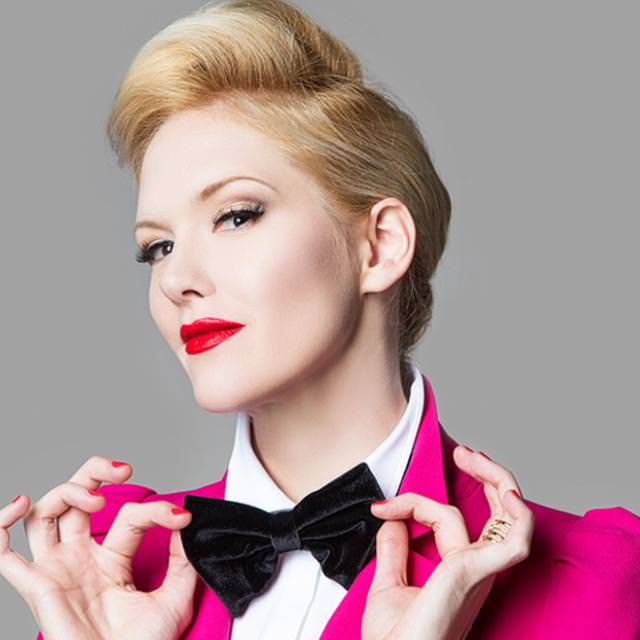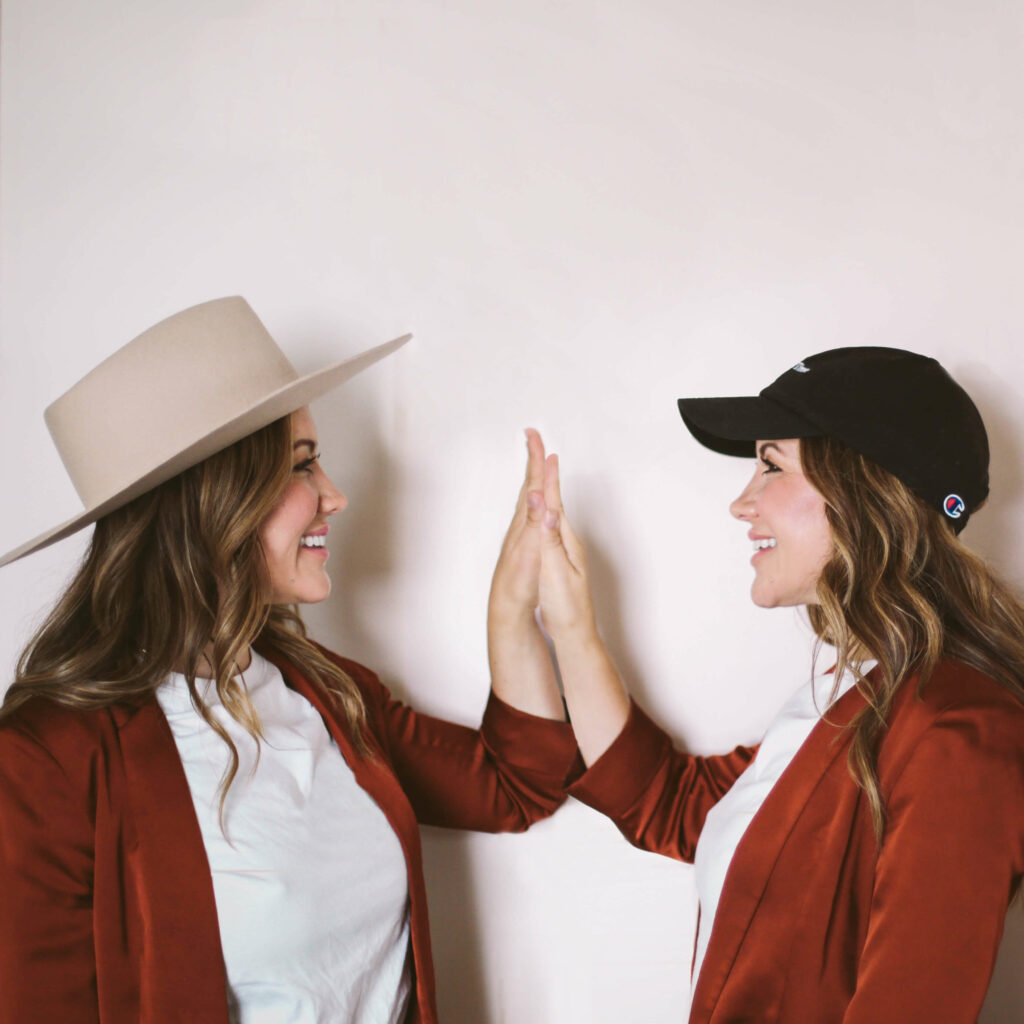I am slowly coming out of my maternity leave (I've really missed you all!) and here to present our last lady to guest post! Sarah has worked with people like MADONNA on their branding and we are so lucky to have her here! She's going to show us exactly how to go pro and systematize so that no matter who's working on our stuff, our brand is consistent across channels. She broke this down in so much detail – It's a must read if you don't already have this business process nailed down!
You put a lot of blood, sweat, glitter (and dolla dolla bills y’all!) into developing your brand… and while micromanaging every single thing your brand touches is tempting, it’s impossible as you grow into that fancy CEO corner office (or ocean view, as the case may be) you’re headed towards. Fact is, you’ll have to delegate—unless you want to look and sound like you’re having an identity crisis, of course.
-
You may hire a designer (or three) to create a juicy new opt-in e-book, or a sales page for that amazing new program you plan on releasing next month, or a class site for your new e-course, or a Facebook Ad… And the fact is, you can’t rely on your original brand or web designer can create all of these assets for you. (She might be able to, but she also might be busy/genius at other things/expensive, etc.) So how do you ensure that everything that you create has that same look + feel + quality?
-
You may want to hire a VA to help you draft important documents or communicate with your clients on your behalf. How do you ensure they are reflecting your business’s culture?
-
You may want copywriting support to write that sales page, to help you perfect your thoughts in a thoughtfully written blog post, or assist in creating your newsletters. How can you ensure that they are writing in YOUR brand voice?
-
You might hire someone to tweet on your behalf—a social media manager—but how do you make sure all 140 characters sound like it came from you?
The answer to all of these? A glorious brand guide!
What the heck is a brand guide, and why do I need one?
A detailed brand guide ensures that none of your hard earned brand details is left behind, no matter who is working with you or what they’re creating.
EVERY SINGLE BIG BRAND out there has a document that is called a BRAND GUIDELINE.
Over the course of my career, I’ve worked with dozens of huge international brands including Estee Lauder, The Style Network, Vogue, and Madonna just to name-drop a few. 😉
And EVERY time I worked with any of these brands I was handed their brand guide at the start.
It doesn’t matter what size your business is—if you want to play with the pros, you need to act like a pro, and in many, many instances, that will begin with a brand guide.
(BELIEVE me, your designers/copywriters/VAs will love you for this.)
A simple three-part recipe for your brand guide cocktail.
A brand guide can be as simple or as complicated as you want to make it. It’s something that you can put together yourself in an afternoon, or something your brand designer can help you out with.
Either way, it needs to address three specific elements: your visuals, your meaning + mission, and your message.
Visual
If you’ve invested in a professionally designed logo and/or website, that’s the place to start with your visuals. If you don’t know or don’t have any of this information, contact your original designer and ask for it. Otherwise, just fill in what you have and go from there.
-
Color palette (a visual representation of the colors as well as hex values—use this tool to find hex values)
-
Fonts + usage (usage means noting line spacing, kerning, line height, etc.)
-
Visual mood board that captures the essence of your brand—colors, imagery, inspiration etc. (Pinterest is great for this.)
-
Logo design and usage For instance, is it formatted in more than one way? If so, show what that looks like. If your logo is formatted black and white, what should that look like? If it’s in full color, what does that look like? If it shows up on a black background or a white background or a colored background, how should it look?
-
Business card design, letterhead design, photography and any other collateral.
Meaning + Mission
Helping your freelancers, employees, and contractors understand who you are, where you come, and where you’re going will help them do their best work for you.
-
What you do and why you are different.
-
What is your mission statement?
-
Your Official Bio
-
What is your brand story? Why do you do what you do?
-
Who is your target audience? Provide a detailed description of who these people are.
-
Taglines and soundbites
-
Your 5-year vision (it’s important for people to know WHERE it is that you are going—they can help you get there if you let them in on your vision).
-
What are magazines or websites that you visit frequently? (This can provide a GREAT wellspring of ideas for social media managers or even ghost bloggers to capture your personality in your posts, reference from REAL sources that you actually frequent yourself.)
-
Your hobbies. (Let people that are helping you in on who you are this can inspire some of their work on your behalf.)
Messaging
This is exceptionally helpful when hiring copywriters and having their work sound like you, not them. This covers everything from whether you use industry jargon or plain language to whether or not you swear.
-
Writing style and voice—is your voice friendly and colloquial, or formal and straightforward? Do you use slang? Do you swear?
-
Brand Lexicon (words + phrases commonly used—can include puns, slang, etc.)
-
Social Media style—do you have conversations on social media? Always call people out by name? Share memes?
-
Social Media Guidelines (give a few example tweets and Facebook posts so that your style can be emulated).
What should your brand guide look like?
The nice thing about this is that you don’t have to spend an arm and a leg and a ton of hours on a brand guide to make it useful. Getting it done is more important. Put everything in a Word document if necessary.
You could even download a template and fill in the blanks, like these two from GraphicRiver.net.
When you’re ready to really go pro or find that you have gaps that need filling, you may also want to invest in a little pro help to truly capture your brand in a guide that will be absolutely indispensable to you.
-
If you’re not clear on your brand voice and messaging, my pal Lacy’s super power is understanding and teasing out other people’s voices. She’s just launching a new service to help people uncover and define their brand voice called the Voice Identification Process, and she’s a killer resource.
-
If you need help defining your visual brand, your favorite designer should understand the concept of a brand guide and be able to help you flesh one out. If you don’t have a fave designer yet, Elance is a GREAT resource for affordable help.
-
Looking for a VA you can delegate some of these tasks to? I love Zirtual.
-
And if you need overall brand strategy, design, and development, then I may be your gal. I offer one-on-wonderful Privé Brand strategy sessions that result in a completely customized brand guide you can take to the bank. Or, at least to your creative team.
As you may have realized, building a brand guide isn’t just about providing information to freelancers. Instead, it becomes an exercise about deeply understanding your own brand and how you want to show up in the world.
Do you have a brand guide for your business? I’d love to hear your thoughts or questions on the process in the comments below.
Sarah Ancalmo is an Award-Winning Creative Director, Designer, and Fashion Stylist for big and small brands. Through her business, Public Persona, she works with small to big brands and businesses that are wanting to break into the next level in their marketplace, with the level of vision, insight, and expertise of a major design and image agency. Informally, she's a style-obsessed designer with a weakness for asymmetry, puns, great shoes, and buttery chardonnay.




